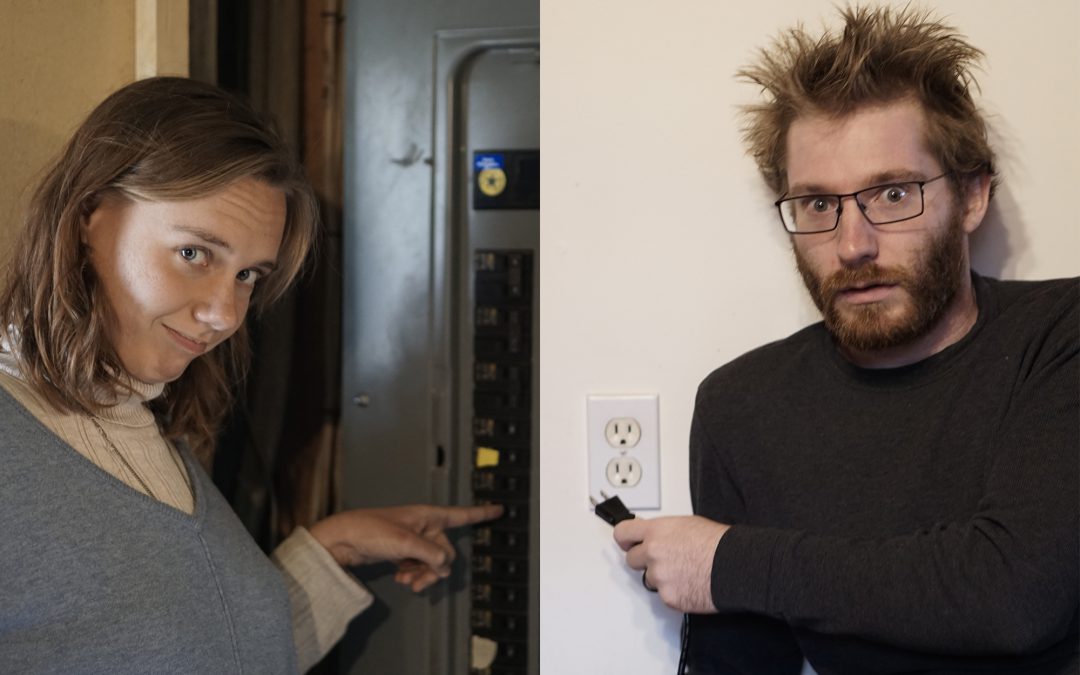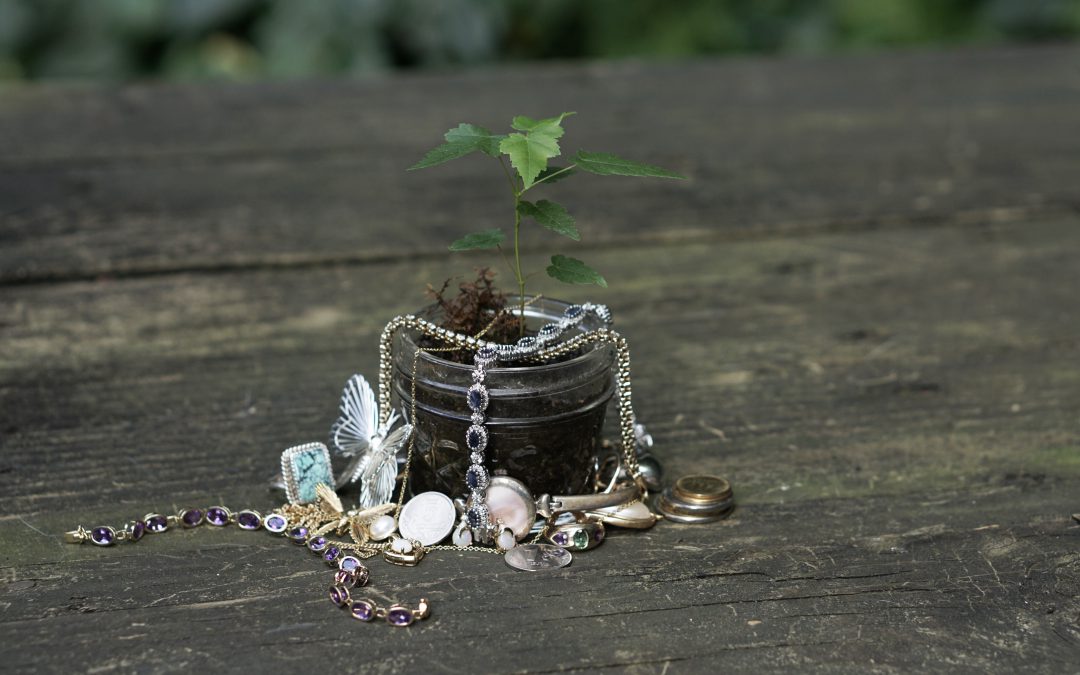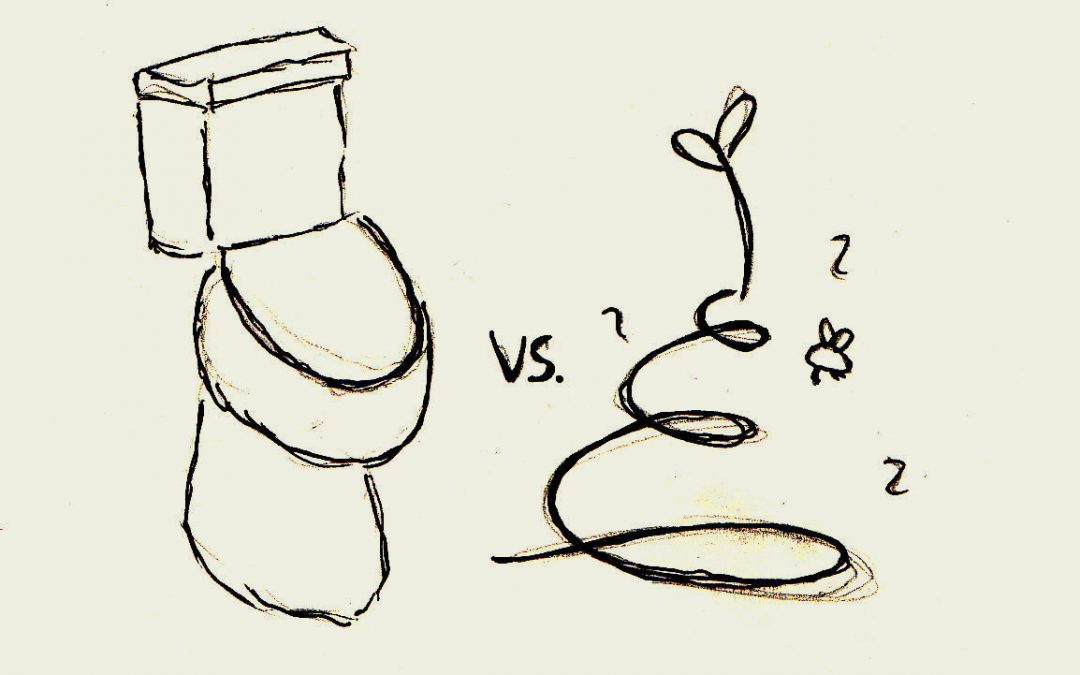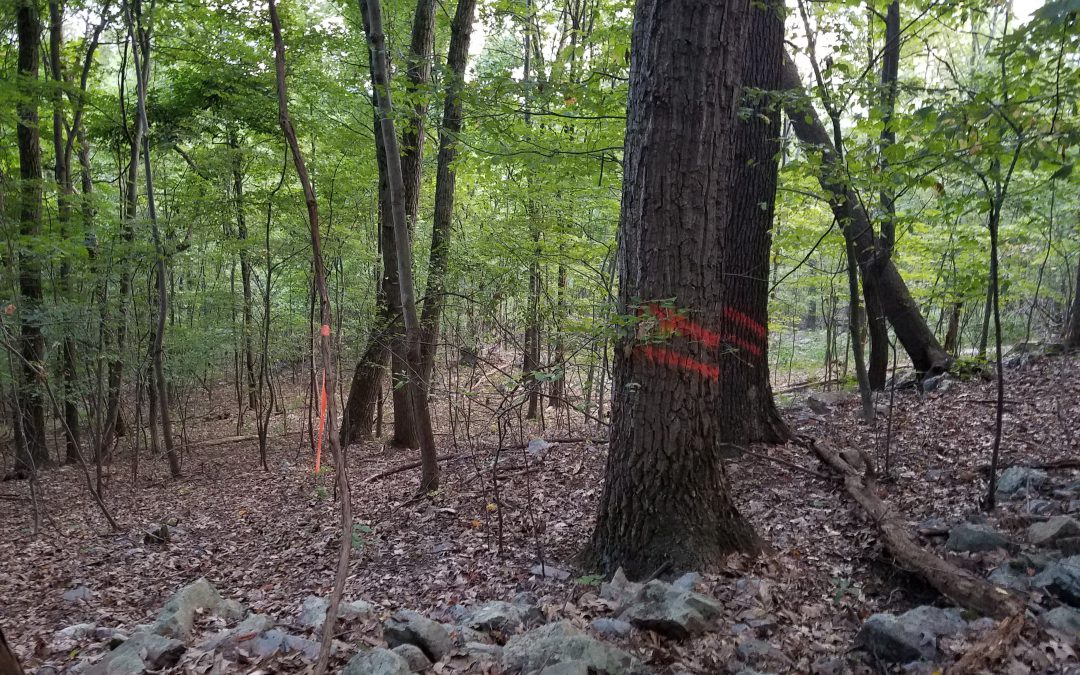
by William | Dec 16, 2020 | Net Zero, Small Footprint
Dear Readers,
First came place, then came water. Now, comes energy…dun, dun, dun! The Energy Petal is the third of the seven petals for the Living Building Challenge.
Ha! I was going to say that we have high hopes for this one…but we have high hopes for the Water Petal and the Petal of Place, too. There are just way too many high hopes floating around this joint! But. If you are willing to stick with us (whether you are amused or annoyed by our ideas…), then William and I would be most honored to share our highness of hope with you!
To refresh your memory, here is a chart with all seven petals and their imperatives. In this blog, we are going to be focusing on Energy!

by William | Aug 19, 2020 | Healthy Living, Small Footprint
Admittedly, this blog is for William and I’s own justification of our impending financial commitment in this home, as well as it is for all funders who look at us and say we are nuts. We are. And we hope that this breakdown of some essential building materials and their worth (financially and environmentally) will convince your financial institutions to join us in the insanity and fund our venture in sustainable living.
The home or building you may or may not be currently sitting in as you read this blog, was hopefully built to, and still meets, ‘code.’ When an architect says ‘building to code,’ they are referring to the minimum required building standards set by the International Building Council (IBC). The intentions of ‘codes’ are to create a safety, health, and energy efficiency standard for homes and buildings. The IBC creates a variety of codes that cover all aspects of constructions regarding commercial and residential buildings which can be adopted by local governments. For the purpose of this article, we will be talking about the IBC’s International Energy Conservation Code (IECC) which sets minimum R-values and other measures according to a home or building’s climate zone.
William and I don’t want to build our home to just meet code. We want to thoroughly exceed it. We want to build to Passive House (PHIUS) standards, meet air quality set by RESET, be net positive, and maybe even meet Living Building Challenge standards. We want this home to be bonkers efficient and holistically healthy~ for our family, our builders, and our environment.

by William | Jun 24, 2020 | Net Zero, Small Footprint
Dear Readers,
If you have read the “Our Waste Goes Where?” blog (and if you have, I applaud you..that was a rough one..) or are familiar with how wastewater treatment generally works, whether it be a septic tank or a treatment facility, you may be wondering how the Clivus Multrum composting toilet and greywater system is beneficially different. I know that I was certainly curious…I mean, the results are similar. Most of the solid and liquid waste, whether flushed or composted in a hole, eventually find their way back into the great world as either fertilizer or drainage. So, what makes the idea of not just specifically the Clivus Multrum system, but a composting toilet in general, so enticing?
Since William and I are looking to build The Seed in a rural area, I am going to directly compare a composting toilet and greywater system to what is most often offered to fellow rural inhabitants…a septic tank.
Composting Toilet
A composting toilet is, for us, preferable to a septic tank for three main reasons.
1) It makes the home, and encourages the inhabitants within it to be, holistically self-sustaining, or, our version of net-zero living. Utilizing a composting toilet allows the home to have a reduced reliance and impact on the physical site it is on.
There is no digging a sand mound, or installing deep in the earth a septic tank. The solid waste that settles in the tank does not need to be pumped out by a big truck, and then subsequently dropped off at a public wastewater treatment facility.
Rather, the solid and liquid waste that the inhabitants generate rest in separate bins until they can be returned to the earth as stable soil fertilizer. The owner or resident (William and I!) can do this themselves with a simple and common tool…a shovel.
A composting toilet also results in a reduction of the home’s overall water usage. If you opt for the standard composting toilet, then you use no water when contributing your waste to compost. None. Even if you choose the foam flush composting toilet, you only use 6 ounces of water per flush. If you are relying on a rainwater pillow for your water supply, this is a HUGE plus…as well as a beautiful help in achieving net-zero living.
The greywater garden for the greywater filtration and distribution would be the only alteration required to the land…and that is because we would physically be planting a garden which would aid in filtration and dispersal. Yay, plants!
Not only would a composting system aid the home in being holistically net-zero, but it would better enable the inhabitants to take account for their own waste. Before researching for the blog, “Our Waste Goes Where??”, I honestly had no idea what happened to my processed nutrients. I figured it went to our septic tank, which I knew had to be pumped once every couple years…but I had no idea that it eventually went to a wastewater treatment facility, and what that process looked like. Someone else took care of it. All I had to do was sit on the toilet, do my thing, and flush. Done. The mess was no longer mine. Because William and I intend to raise children in this crazy idealistic home of ours, we see the composting toilet as a great life lesson for them…in William’s (and a lil’ of Shelby’s words), it will be “teaching our children to not expect other people to clean up their nasty sh…enanigans.”

by William | Apr 15, 2020 | Small Footprint
Dear Readers,
Before we begin, here are a few key terms…
Cross Laminated Timber (CLT): several layers of lumber boards stacked crosswise and glued (or through other means of attachment) together to form sturdy, thick, structural panels.
Sequester: to take ‘hold’ of. For example, trees have the ability to ‘sequester’ carbon as they grow, and release oxygen. Even if a tree is cut down, it still continues to ‘sequester’ that carbon. Once it is burned or it starts to decompose, it no longer ‘sequesters’ the carbon, and instead releases it into the atmosphere.
Sustainable: Relative.
Again, here is ‘sustainable’ being thrown around like a hot potato. When I first started researching for this blog, I self-defined the ‘sustainability of CLT’ as such: “If CLT continues to gain popularity as a construction material, will forests’ health then be put into jeopardy?” If I found the answer to this question to be, “no, forest health will not be affected if CLT continues to rise in fame” then CLT was, to me, considered to be ‘sustainable’.

by William | Apr 8, 2020 | Small Footprint
Barred Owl Inspirations Dear Readers, On a warm, early morning in late January, I embarked on one of my typical runs on one of my typical routes. The sky was a pale grey as I propelled myself up the mountain and through the trees. Seeing something big and feathered...





